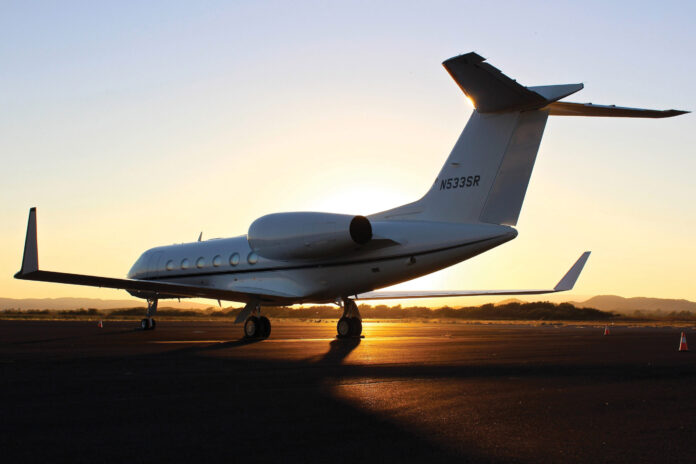Many in the hard-hit hospitality industry have been breathing a collective sigh of relief with warmer weather approaching, pent-up demand from two years of scrapped or limited trips, and a steep decline in omicron-variant cases.
But now, will record-level gas prices and inflation siphon away would-be travelers’ 2022 vacation funds and dampen hopes for a rebound? We asked state and local tourism industry officials to weigh in with their forecasts for the travel season ahead, and there’s some good news to share.
Sean Higgins is “chief fun officer” with Mint Julep Experiences in Louisville, which offers tours of distilleries, horse farms, foodie destinations, breweries, landmarks and more to visitors from across the globe.
He’s encouraged by projections from the World Travel & Tourism Council, a travel industry research organization, that foresee 6.2% growth in travel above pre-pandemic levels this year and he expects the ever-popular Kentucky Bourbon Trail to experience 20-25% growth.
In 2021, his tour company surpassed its 2019 numbers by 22% to reach a company record. He anticipates 22-25% growth this year.
Though international travel numbers are starting to creep up again, most customers hail from within the U.S, he said. The 2022 travel season already looks promising: The number of monthly leads has nearly doubled from January and February 2021 to this year, with average monthly leads growing from 780 in 2021 to 1,500 this year.
In anticipation of a bustling tour season, Mint Julep purchased four new vehicles with four more to buy by year’s end if they can be found amidst ongoing inventory shortages.
New hires are also being made.
“At the height of the pandemic, we were down to six people in our operations,” Higgins said. “We’re back up to 53 and we continue to hire and train knowledgeable tour guides and drivers.”
Hank Phillips, president/CEO of the Kentucky Travel Industry Association, says he’s cautiously optimistic about this year’s travel season.
“Kentucky tourism’s recovery is underway but far from complete from the COVID-19 health and economic crises that devastated the industry. As the tourism industry works to gain increasing traction, we seem trapped in a game of whack-a-mole. As soon as one challenge recedes another emerges to take its place,” Phillips said, citing consecutive spikes of various COVID-19 strains, rising gas prices and inflation as examples.
 Still, a few factors work in Kentucky’s favor, he said. Despite the challenges, more people are traveling, even if they take shorter or less expensive trips. In this way, Phillips hopes more visitors than usual from surrounding states will be attracted to Kentucky’s proximity and affordability.
Still, a few factors work in Kentucky’s favor, he said. Despite the challenges, more people are traveling, even if they take shorter or less expensive trips. In this way, Phillips hopes more visitors than usual from surrounding states will be attracted to Kentucky’s proximity and affordability.
“During the pandemic we were reminded of the value of Kentuckians traveling within Kentucky,” Phillips said. “We expect that to also occur as a result of gas prices and inflation.”
The key for the commonwealth to remain competitive, he said, comes down to marketing, as a number of states over the past year have made sizeable investments in tourism marketing. Local and state marketing in Kentucky needs to follow suit to generate increased awareness and demand for all that Kentucky has to offer, he said.
KTIA has requested additional marketing funds—about 4% of the state’s total allocation of American Rescue Plan Act funds—to be approved by the state legislature, though the outcome of this request was uncertain at press time.
Kentucky Department of Tourism Commissioner Mike Mangeot said demand exists for Kentucky to have a robust 2022 travel season. His department works with an experienced travel/tourism research firm to track travel sentiment, and he said a mid-March update showed 92% of respondents planned to travel in the next six months.
Mangeot also cited industry research results that show once someone visits Kentucky, they’re likely to plan a return visit and recommend others travel here, too. Updated research also indicates that mid-2023 is now the projected point at which pre-COVID tourism numbers are reached, outperforming 2019.
“My hope is that Kentucky is a little bit ahead of that,” Mangeot said, explaining that Kentucky’s travel and tourism industry wasn’t impacted as severely as some other states, perhaps prompting a faster recovery.
Mangeot noted that travelers may adjust to high gas prices by traveling shorter distances or by staying in limited-service versus full-service lodging establishments. Some may want to experience smaller towns and outdoor recreation opportunities, which Kentucky offers in abundance.
Conventions are also returning, and $5 million in CARES Act funding from the state in 2021 enabled new markets and demographics to be reached, such as LGBTQ+ travelers, he said.
 Group travel beginning to rebound.
Group travel beginning to rebound.
Louisville Tourism Executive Vice President Doug Bennett said group travel is rebounding and the continued popularity of the Kentucky Bourbon Trail helped the state through some of the industry’s darkest days.
Outdoor festivals are being scheduled once again for this summer, with events generating interest as far as 300 miles away. Lead volumes are also on an uptick.
Bennett said his office is happy to promote local attractions’ announcements of adding days to their calendars, additional tours and new restaurants or hotels opening because “they have a cumulative effect of showing the public that we’re back.”
Louisville Tourism officials lean heavily on research when determining where to best spend advertising dollars and in what medium.
Overall, he feels 2022 travel rates won’t yet reach 2019 volumes but may be close. As Bennett studied Tourism Economics’ quarterly forecast for group business in the top 40 markets, he said “trend lines are all pointing north.”
Though the rebound may be slow and more like a “marathon,” Bennett said his organization is “very encouraged” nonetheless.
“Will gas prices have a damper on that? Minimal. I still think people will travel,” he said.
Bowling Green Area Convention and Visitors Bureau Executive Director Sherry Murphy said with the pandemic loosening its grip on the travel industry, there’s a significant increase in bookings and events in Bowling Green compared to 2020 and 2021.
“We already have 14 automotive events scheduled throughout 2022, which is the largest number we have seen in quite some time,” she said.
One of the biggest challenges facing Bowling Green and elsewhere is staffing for hotels, restaurants and attractions. Murphy said her office is working with local officials on ways to help, including launching a website highlighting where workforce shortages are located and direct links to apply at BowlingGreenWorks.com.
“Our community leaders understand a vibrant tourism scene is crucial to the health of our local economy as well as the quality of life here in Bowling Green,” she said.
Competition with other states is another challenge, and it’s crucial to put impactful dollars into advertising.
“If it is not considerable, chances are our city’s and state’s message will be squelched by other states’ overwhelming advertising messaging,” Murphy said.
Overall, she said the Bowling Green area is looking forward to 2022 being the best year yet, as hotel bookings and planned events continue to fill calendar slots.
 Airports expect surge in vacation travel
Airports expect surge in vacation travel
Airport officials, too, are preparing for a busy travel season to take off.
Amy Caudill, director of marketing and community relations at Lexington’s Blue Grass Airport, said many variables exist that make future travel planning difficult to predict but as COVID-19 numbers continue to decline, she believes a surge in vacation travelers will follow.
In 2019, the airport had 1.5 million total passengers with 18 nonstop destinations and 37 average departing flights per day. Those figures represented a 7.6% increase in total passengers compared to 2018. According to the latest statistics on the airport’s website, there were 971,392 total passengers for the calendar year-to-date in December 2021, compared to 599,098 for the year-to-date in December 2020. And 2022 may be the comeback year, if things go well.
“I think there’s a lot of pent-up energy out there and people are wanting to take trips,” Caudill said.
But jet fuel prices are increasing too, and most likely those costs will be passed along to travelers, Caudill said, potentially impacting travel plans for some.
Airline staffing is also a challenge, with pilot shortages impacting the number of flights an airline can operate. As a result, Caudill said, demand may sometimes exceed the number of available flights.
Still, signs of relative normalcy are reappearing this spring. Valet parking has reopened in Lexington, and the business executive lounge—which was closed during COVID—is newly renovated and will soon reopen.
“We’re doing our best to get at full staffing so that all our amenities are available to the traveling public this summer,” Caudill said.
Candace McGraw, CEO for the Cincinnati/Northern Kentucky International Airport (CVG), says passenger traffic recovery is expected to continue throughout the year with an emphasis on leisure travel and the return of business travel.
“We expect volumes to be around 75-80% of 2019 levels this year, with a full recovery taking place by 2024,” McGraw said. “Air service continues to return as well as new and expanded flight options being added.”
Airport officials look forward to international travel picking up with the resumption in early May of Air Canada’s service to Toronto and Delta resuming direct transatlantic service to Paris in August, she added.
Dan Mann, executive director of the Louisville Regional Airport Authority, said that in late February he thought the sky was the limit for this year’s travel season—until rising oil prices somewhat muddied the forecast.
Even so, he said the capacity for Derby is at an all-time record, airports are at about 95% of pre-COVID capacity and advance bookings are robust. In fact, air service has grown, with more nonstop flights now than in the record-setting year before COVID, Mann said. With increasing crowds, travelers are once again advised to arrive 1 1/2 hours before their flights to ensure ample time for check-ins, he said.
Spring break could predict summer forecast
 Lodging industry officials are also keenly interested in this year’s travel forecast. Jakaye Garth is regional director of sales for Thoroughbred Hospitality Group, which currently represents seven Kentucky hotels, with another two forthcoming.
Lodging industry officials are also keenly interested in this year’s travel forecast. Jakaye Garth is regional director of sales for Thoroughbred Hospitality Group, which currently represents seven Kentucky hotels, with another two forthcoming.
“For the 2022 travel season, my hopes are to see travel trends and hotel revenue back to 2019 numbers,” she said. “From what we are seeing so far this year, I anticipate recovery closer to 2019 numbers. However, depending on the market, some of THG hotels will see that recovery and some will come close but may not see full recovery for another year or two.”
Garth said more rural areas that offer outdoor recreation—like the Lake Cumberland area—are expected to see improved 2022 bookings, in line with better-than-anticipated numbers the past two years. Larger markets like Louisville, where meeting and convention travel comprises a bigger piece of the pie, may recover more slowly.
Hotel industry groups closely watched spring break travel patterns to get a glimpse of what summer may bring, Garth said.
“Our hope is if travelers proceed with their plans for spring break they will proceed with summer travel as well,” she said.
Claude Bacon is on the Kentucky Travel Industry Association board and is vice president with LinGate Hospitality, which owns and/or manages 21 hotels in Kentucky, Tennessee and Ohio, nine in Kentucky alone. He said Kentucky tourism is well positioned to capitalize on all forms of demand, proving once again why it’s a destination state.
“We are cautiously optimistic about leisure travel in 2022. However, inflation and increased gas prices will certainly add new elements of concern and will affect demand,” he said. “Leisure travel aside, business, group and convention travel must increase in order to achieve pre-pandemic levels in hotel occupancy and room rates.”
KTIA’s Phillips said that after a tough two years, those who provide and promote the state’s myriad offerings are ready for some favorable winds of change.
“They have been so resilient, creative and mutually supportive throughout the difficult times,” he said. “They are now chomping at the bit to move from working hard to just hang on and return to working hard in welcoming and serving visitors to our great state.”
Click here for more Kentucky business news.














